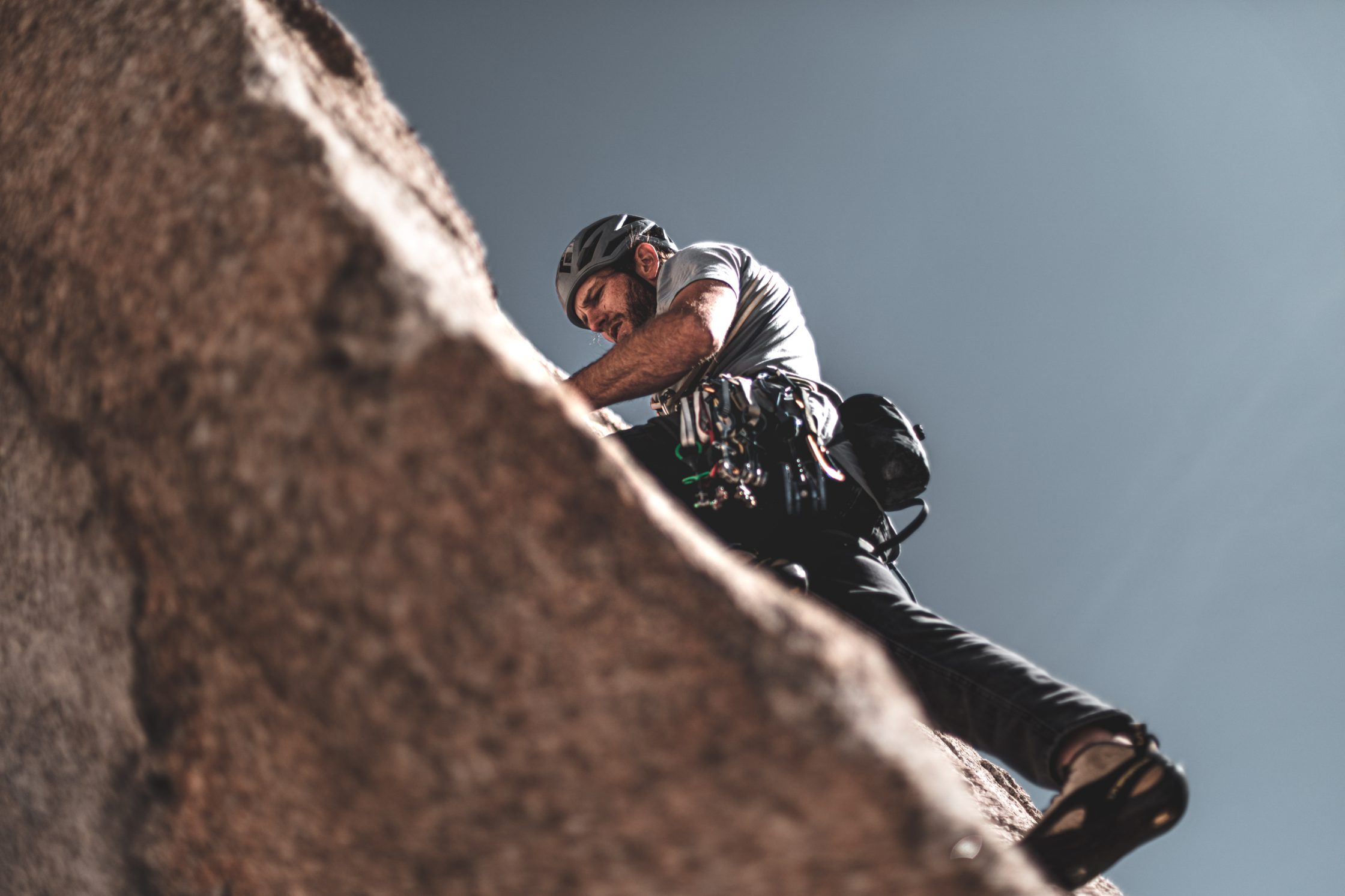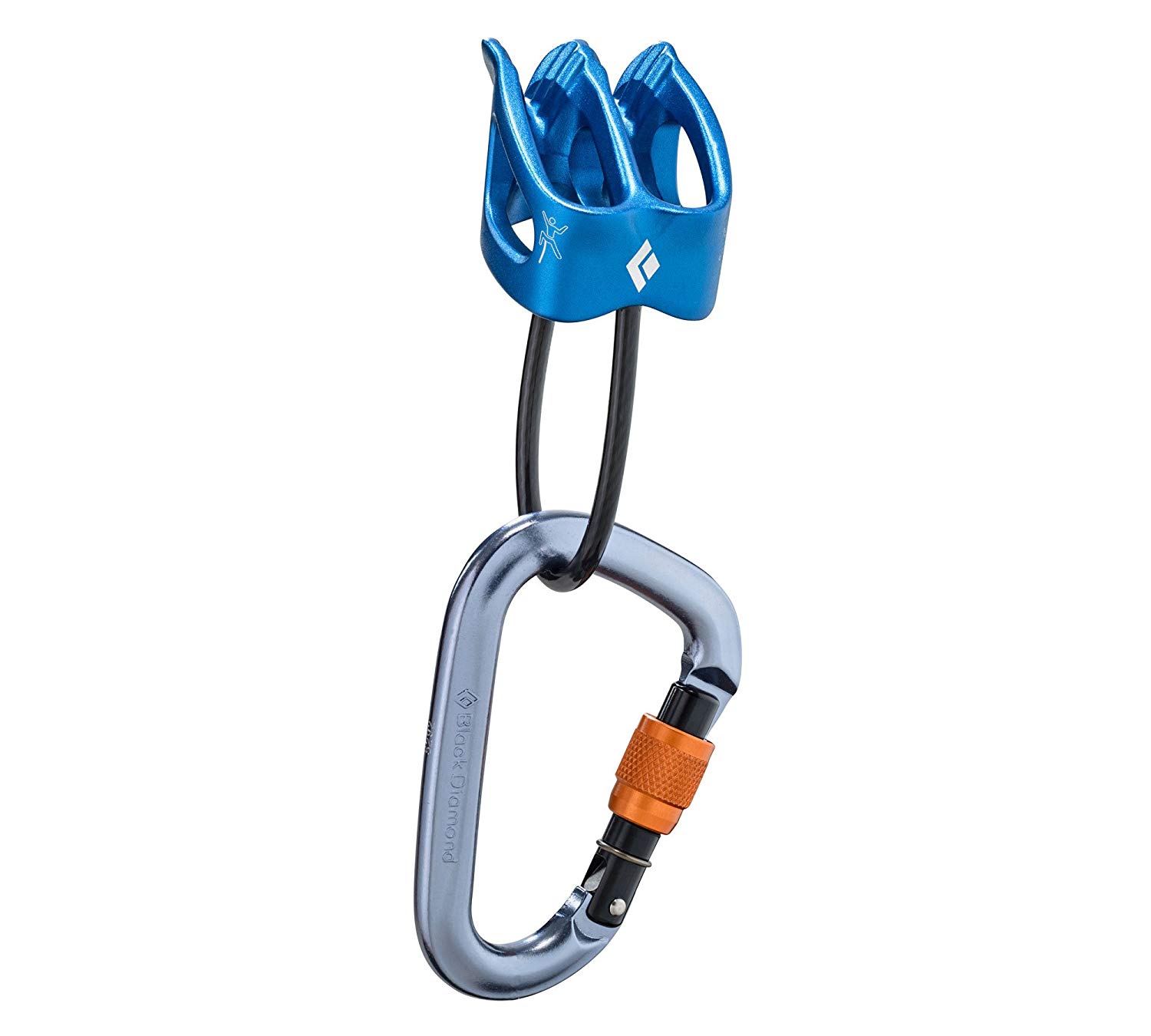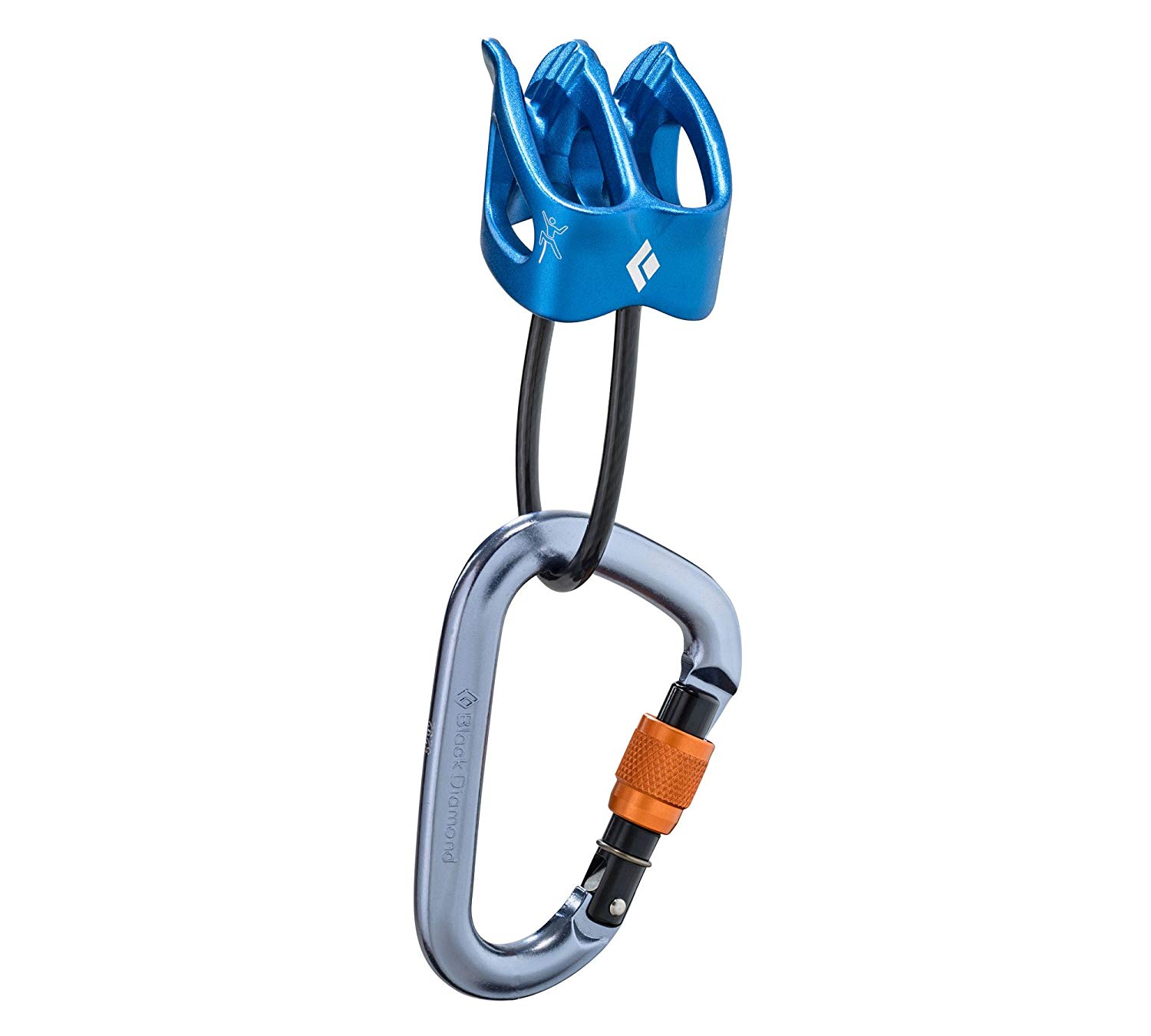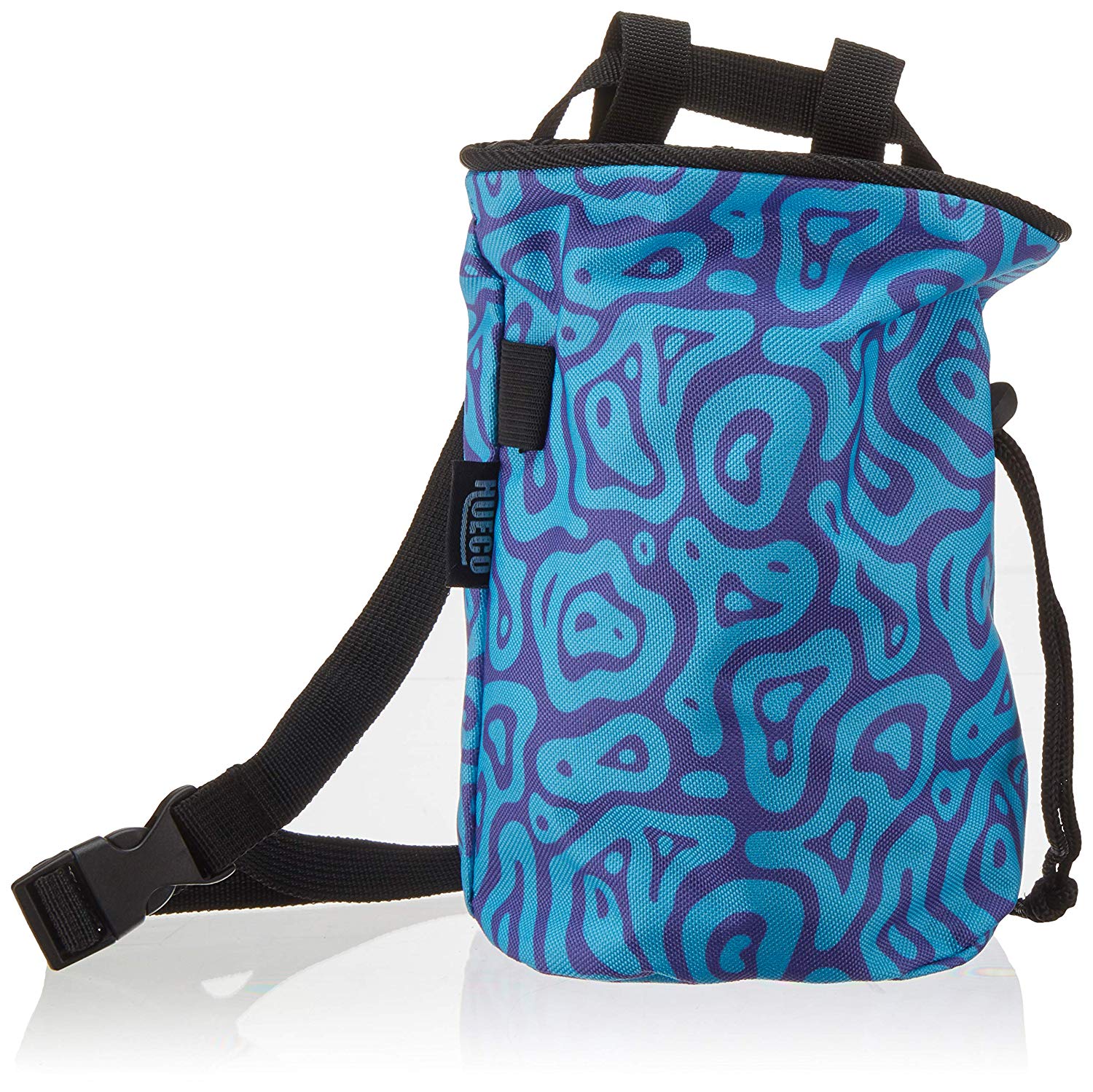Rock climbing is a hobby for outdoor enthusiast looking to go vertical! If you are brave, flexible and eager to learn, then rock climbing may be your new favorite outdoor hobby!
So, how do you get started?
With the large amount of gear, technique, jargon and culture surrounding the sport, beginning rock climbing can seem intimidating.
It doesn’t have to be.
While we recommend finding a mentor or friend to help you get started, the very first step should be doing research and learning the basics before tying in. You’re in the right place!
First off, we will talk about the difference between Indoor and Outdoor rock climbing. As a beginner, we recommend starting indoors at a climbing gym.
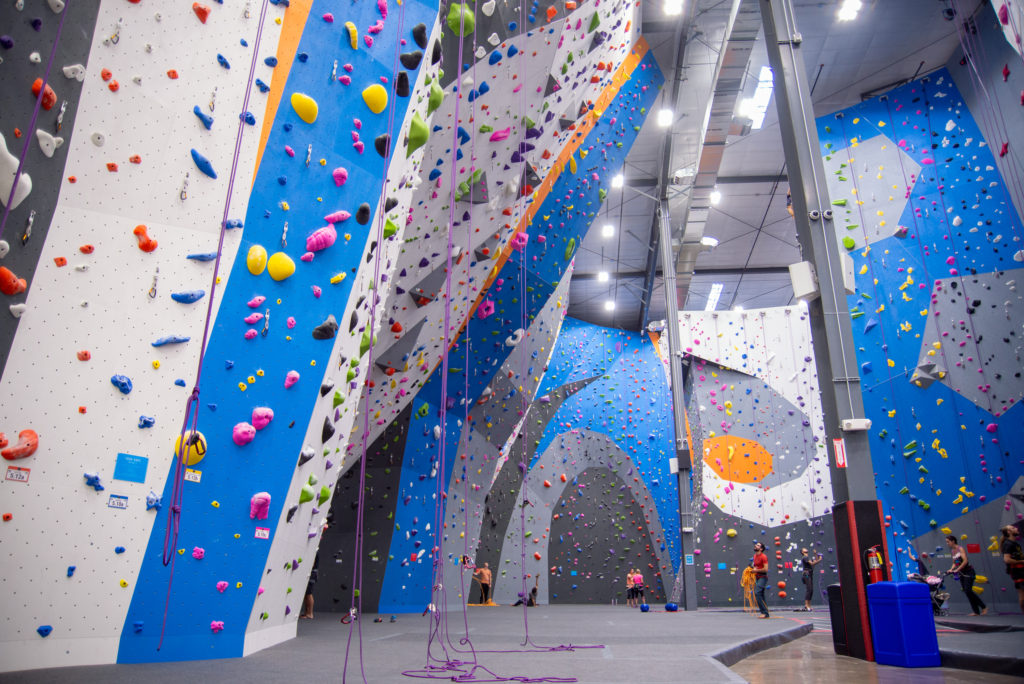
Indoor Climbing
Climbing indoors at a local climbing gym is a great place to get started. You will be able to get a feel for the basics, the culture and general idea of rock climbing.
One distinct advantage of starting at a climbing gym, is that climbing gyms will offer beginners lessons and classes. These classes are great to learn essential skills and fundamentals like belaying, knots, communication and basic climbing techniques.
Top Roping – While climbing in a climbing gym, chances are you will be doing type of climbing called top roping. Essentially, this means that the rope is already anchored at the top of the route and you will be connected to the rope at the bottom. This ensures that if you are to fall, the consequences are low and you may only fall a few inches or feet.
Bouldering – Another great option for beginners while climbing in a climbing gym is bouldering. Bouldering is climbing at low heights without a rope. This type of climbing focuses on good technique and movement across the wall (vertically or horizontally) while remaining close to the ground. Often, climbers will use a “crash pad” so they can fall several feet to the ground without getting hurt.
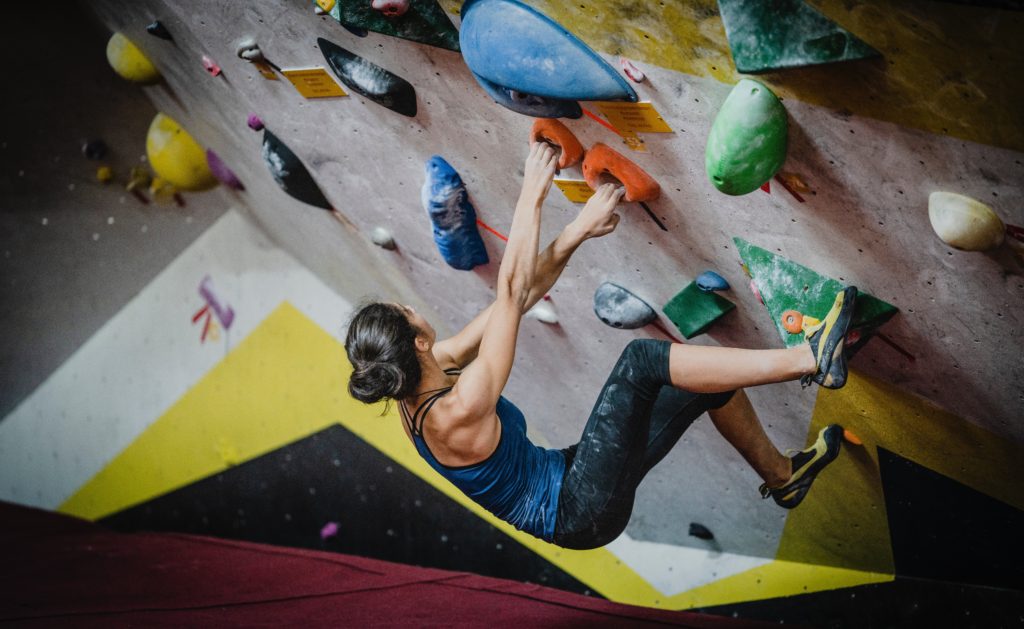
Outdoor Climbing
When you’ve got a grip on the essentials and you’ve made a few friends at the gym, it may be time to get your hands on some real rock!
Climbing outdoors is a whole new challenge!
In a gym, you’re more or less told where to put your hands and feet. Outdoors, every little edge or chip is an option for your hands and feet. Climbing outdoors feels more like a physical puzzle that you solve with your body as you make your way up.
Consequences can be higher climbing outdoors as well. You will need to set your own anchors and have more of your own gear.
Sport Climbing
Sport or “lead” climbing is considered the most popular style of outdoor climbing. This style of climbing follows a set, bolted route where the lead climber clips quickdraws into the bolts along the route.
The lead climber clips quickdraws and the rope on his or her way up the route, to eventually make an anchor at the top. Once the anchor has been set, other climbers can “top-rope” climb the route, similar to indoor climbing style.
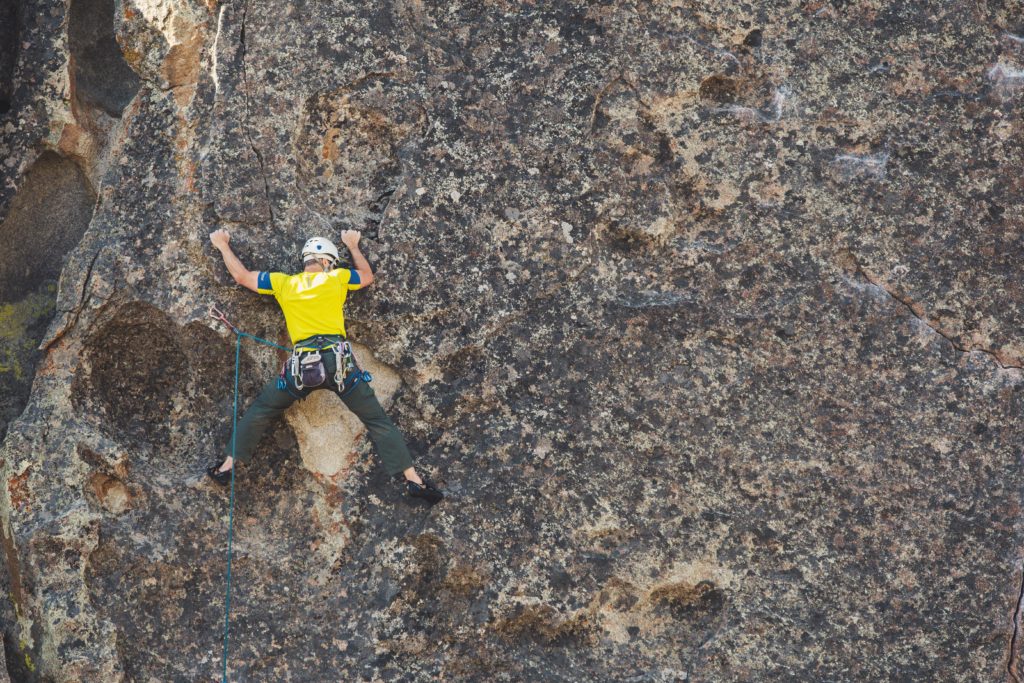
Traditional Climbing
Traditional or “trad” climbing involves a large amount of gear including cams, nuts, stoppers, quickdraws and more. Trad climbing does not always involve a set route and safety and anchors are all set by the lead climber on the way up.
Trad climbing is often done in cracks and involves a large amount of technical skill. As this post is meant for beginners, we won’t go into a large amount of detail here. If you’re curious to learn more about traditional climbing, check out this post from REI.

Belaying
One essential skills for any rock climber is belaying. Belaying is rope management from the ground that ensures the person climbing is held safely by the rope. The “belayer” is the person on the ground, using their harness, a locking carabiner and an Air Traffic Control device, or ATC to ensure the climbers safety.
When taking a class at a climbing gym, belaying will be one of the first skills they teach you. Before you go, you’ll want to have some idea of what they will teach.
This video is helpful in visualizing what belaying technique looks like…
Knots to Know (As a Beginning Climber)
The world of rock climbing is a rabbit hole of knots, knowledge and gear. As a rock climbing beginner, there are a few basic knots that you’ll want to know and master.
Figure 8 Knot
The Figure 8 knot is essential for a climber to connect their harness to the climbing rope. Be sure to practice this knot and learn how to tie it neatly and with enough tail to tie a safety back up.
A few other essential knots to practice and master include:
- Clove Hitch
- Double Fisherman’s Bend
- Figure 8 on a Bight
- Barrel Knot
- Prussic Hitch
With these knots in your tool belt, you’ll be prepared for the majority of rock climbing situations. Check out the video below for examples of how to tie these knots. Practice and memorize them!
What climbing gear do I need to get started?
If you are just starting, most climbing gyms offer rental gear that you can practice with and see if rock climbing is right for you. After renting a few times, you’ll likely want to invest in your own gear.
Below are a few essential items to get set up with a basic starter rig:
Harness
A harness is the the strap that wraps around your waist and legs to keep you secure and connect you to the rope. Harnesses come in different shapes and sizes, but all essentially do the same thing.
Harnesses are made slightly differently for men and women so keep that in mind when purchasing. As with most climbing gear, you’ll want to buy new to ensure you know what kind of wear and tear the equipment has been through. We recommend a harness like this Petzl Adjama below.
Climbing Shoes
Rock climbing shoes come in various sizes and stiffness. Climbing shoes have a large amount of stiff rubber to maximize the utility of your foot while climbing and stepping on small chips.
Some people like shoes that hurt and bend their feet. Some climbers opt for a more comfortable fit.
The type of shoe you’ll want ultimately comes down to personal preference. A good starter fit for both indoor and outdoor climbing is the Evolv Defy Climbing Shoes seen below.
ATC Belay Device
An ATC or Air Traffic Control device is an essential tool for belaying. This tool, coupled with a quality locking carabiner is a part of every rock climber’s gear belt. We recommend the Black Diamond Air XP package.
See the above video for proper belay technique and be sure to practice!
Helmet
Unfortunately, this is a piece of gear that many seasoned climbers forgo. If you’re an experienced climber and you don’t wear a helmet, shame shame.
If you are a rock climbing beginner (or not), we HIGHLY recommend investing in a helmet, especially when climbing outdoors. Even if you are “just top-roping“, accidents can happen. Protect your dome.
Chalk Bag & Chalk
You’ll notice most climbers have a bag hanging off of the back of their climbing harness. That is a chalk bag, filled with chalk, used to dry their hands before making a difficult move while climbing.
Climbing is a naturally sweat inducing activity.
Chalk helps to keep your hands dry and maximizing your grip on small, slick holds.
Ropes
When you are a rock climbing beginner, you do NOT need to invest in a climbing rope. Climbing gyms provide ropes that are already hung to top-rope when you arrive.
When you first climb outdoors, you should climb with someone more experienced than yourself who will hopefully have a rope.
That said, if you are ready to invest in a climbing rope, you should know that there are several different factors to consider.
- Dynamic or Static
- Diameter
- Length
- Safety Rating
- Features
Dynamic or Static, is how much give the rope has. If you’ll be sport climbing, and may take a whipper or two, a dynamic rope is your friend.
The diameter of the rope you choose will affect the weight, but also how safe it is. An “average” sport climbing rope diameter is 9.9mm.
The length of the rope you buy is largely determined by the type of routes you’ll be climbing. Do some research on the crags in your area and what length rope will best suite your needs.
For more information on choosing the perfect climbing rope check out this article from REI.
Rock Climbing Terminology
Rock climbers use tons of slang and jargon. Terms you may have never heard of that could leave you feeling out of the loop.
Here are a few terms to learn to ease your way into the rock climbing world:
Approach – the walk or path up to the actual rock wall.
Beta – basic information about a climb; tips about a route
Bombproof – typically in reference to a well made, super safe anchor.
Crag – a term for a general climbing area with several routes nearby.
Crux – the most difficult move, or most difficult section of a climb.
Jug – a large hold, easy to hang from; a relief while on a difficult route.
Whipper – to take a long fall on rope; swing back into the wall after a fall
Communication
As a rock climbing beginner, it is important to note the importance of communication while rock climbing.
A climber should be communicating with their belayer and vice-versa throughout the climb. Expectations and planning of a route should be done before you ever start climbing.
The following basic climbing conversation should happen before climbing, and after the climber is tied in and all knots, harnesses, carabiners and gear have been double/triple checked:
Climber: “On belay?”
Belayer: “Belay’s on!”
Climber: “Climbing”
Belayer: “Climb on!”
This basic back and forth, ensures that both parties are on the same page and are ready for the climb to begin.
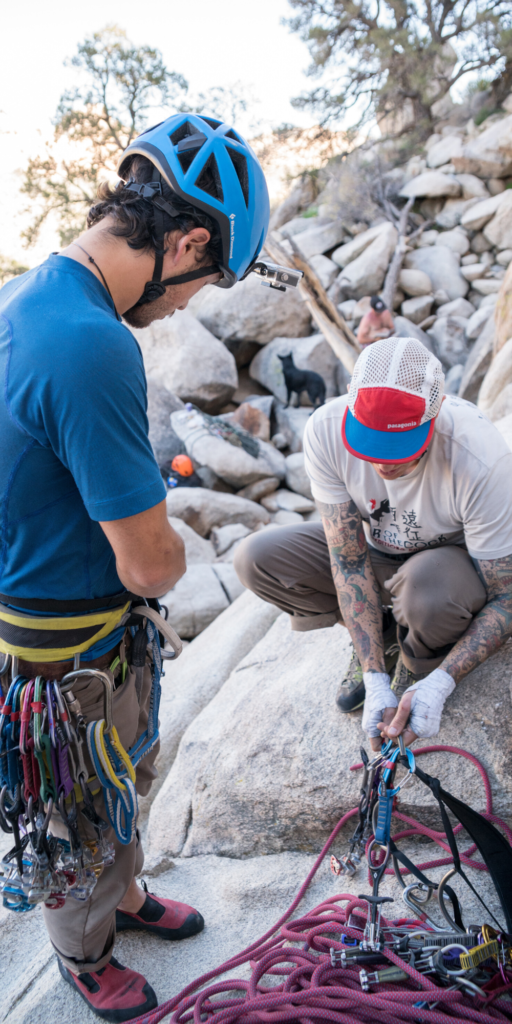
Get Climbing!
Climbing is an amazing hobby to stay in shape and enjoy a physical and mental challenge. Don’t be intimidated if you think you’re not strong enough.
This is a common misconception.
Climbing is far more about balance and technique than it is about muscle. So keep doing your research, learn everything you can, and hit your local climbing gym to get started!

